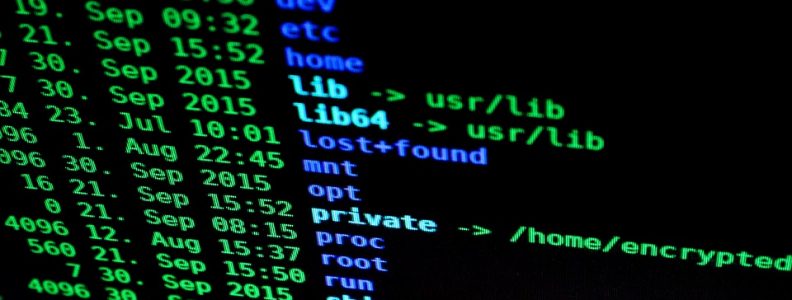Dealing With Cyber Risk Management
Risk, according to the International Organization for Standardization (ISO), can be defined as the “effect of uncertainty on objectiveness.” Leaning on this definition of risk, risk management can be defined as an ongoing process involving the identification, assessment, and responding to the risks. To this end, managing risk should entail organizations assessing the likelihood of an event, the potential impact of the event, and thereafter, determine the best approach to deal with the risk.
Some of the ways organizations can choose to deal with the risk include avoiding it, transferring the risk, accepting the risk or mitigating it. That being said, it is important to note that not all risks can be eliminated, moreover, organizations typically do not have unlimited budget and personnel to eliminate all risks. More often than not, the best cause of action is to mitigate risk, and organizations must determine the kind of security measures (for instance, preventing, deterring, detecting, correcting) they should have in place. In a nutshell, risk management is all about organizations managing the effects of the uncertainty on their objectives in the most logical, efficient, and effective manner using their limited resources.
One of the qualities of a good risk management program is having a program that creates situational awareness and clear communication about the risk. Pursuing such a program allows an organization to make well informed, well-considered risk decisions that are made with the organization’s mission or pursuit of profit in mind.
Moreover, risk management should take a comprehensive approach, taking into consideration all the risks the organization is exposed to and the resources available. This will allow the company to better manage the risk, improve resource allocation, and enhance accountability. Finally, risk management should help identify the risk early enough to implement appropriate mitigations measures.
Essential Elements
Virtually all risk management standards, including those from COCO, ISO, and NIST make use of common processes that have common elements, including:
1. Align organizational risk management to objectives and goals
2. Identify Risks
3. Assess Risks
4. Select Risk Response
5. Monitor Risks
6. Communicating and Reporting on Risks
Aligning enterprise risk management to the organization’s objective and goals helps establish the enterprise cyber risk management foundation for the programs based on the 3 pillars of risk appetite, governance, and procedures and policy. On the governance front, it should involve risk-decision makers and experts using a risk management framework to the entire process while ensuring proper engagement by all stakeholders including authorizing officials, leaders, and the risk committee.
When dealing with the appetite for risk factor, they should be aligned with the organization’s goals and objectives. Finally, when developing procedures and policies, an organization should define risk, and clearly communicate the risk management expectations, and guidelines. After setting up the risk management program, the other risk management elements will help the organization manage risk on a continuous basis.
7 Considerations To Have When Dealing With Cyber Risk Management

Culture
Organizational managers and leaders ought to establish a culture of risk management and cybersecurity throughout their organization. To this end, they should define a governance structure and communicate intent and expectations, thereby ensuring proper training, leadership involvement, and accountability. Training is especially important if an organization want to deal with new emerging risks.
Information Sharing
To be secure, everyone should be involved. The stakeholders must be conversant with the risk, especially the shared risks and the cross-cutting risks. They must also be involved in decision making. When setting up communication processes and policies to share information, thresholds and procedures should be established. Moreover, the right communications tools should be used. For instance, dashboards can use to display critical metrics
Priorities
As mentioned above, every organization has limited staff and budget. As such, organizations should collect information on risks on aspects such as trends over time, the most likely time the risk will materialize (in the short-term, mid-term, or long-term), and impact time horizons. Having this information will help organizations compare and prioritize risks.
Resilience
Since no organization can guarantee successfully protecting itself against all risks, the risk management plans should enable continuity of critical functions during and after the destructive or disruptive attack – in this case, a cyber-attack. Resilience, in this case, entails the deployment of properties that can operate under operational disruption and stress. Typically organizations use CERT-RMM (CERT Resilience Management Model) to improve their operational resilience.
Speed
Speedy response to risk can negate the impact of the risk. The same case applies for early identification of risk. However, you should note that incident response and recovery is dependent on incident management planning. As such, incident management should be done periodically.
Threat Environment
It is important to pay attention to cyber-environment. Organizations, therefore, should enhance, their intelligence capabilities such as deploying network security sensors. They should also account for insider-threats and risk exposure brought about by third-parties, especially the supply chain. Insider threats such as inadvertent (in the case of phishing) and malicious intent are the biggest security problem organizations face.
Cyber Hygiene
A good place to start risk management is to implement basic cyber hygiene practices. Cyber hygiene entails securing your infrastructure, reducing risks, and preventing attacks. The Center for Internet Security provides a 20-points cybersecurity control guide. Furthermore, SEI also provides a list of 11 cyber hygiene practices for organizations. Organizations should use these lists to improve their cyber hygiene.
NIST Cyber Framework 101
As you might appreciate, cyber threats are ever-growing and ever evolving. As such, the goal should be to consistently implement risk management programs.
Given that cyber event will keep happening in your organization, it is far better to be prepared to deal with them when they arise.





